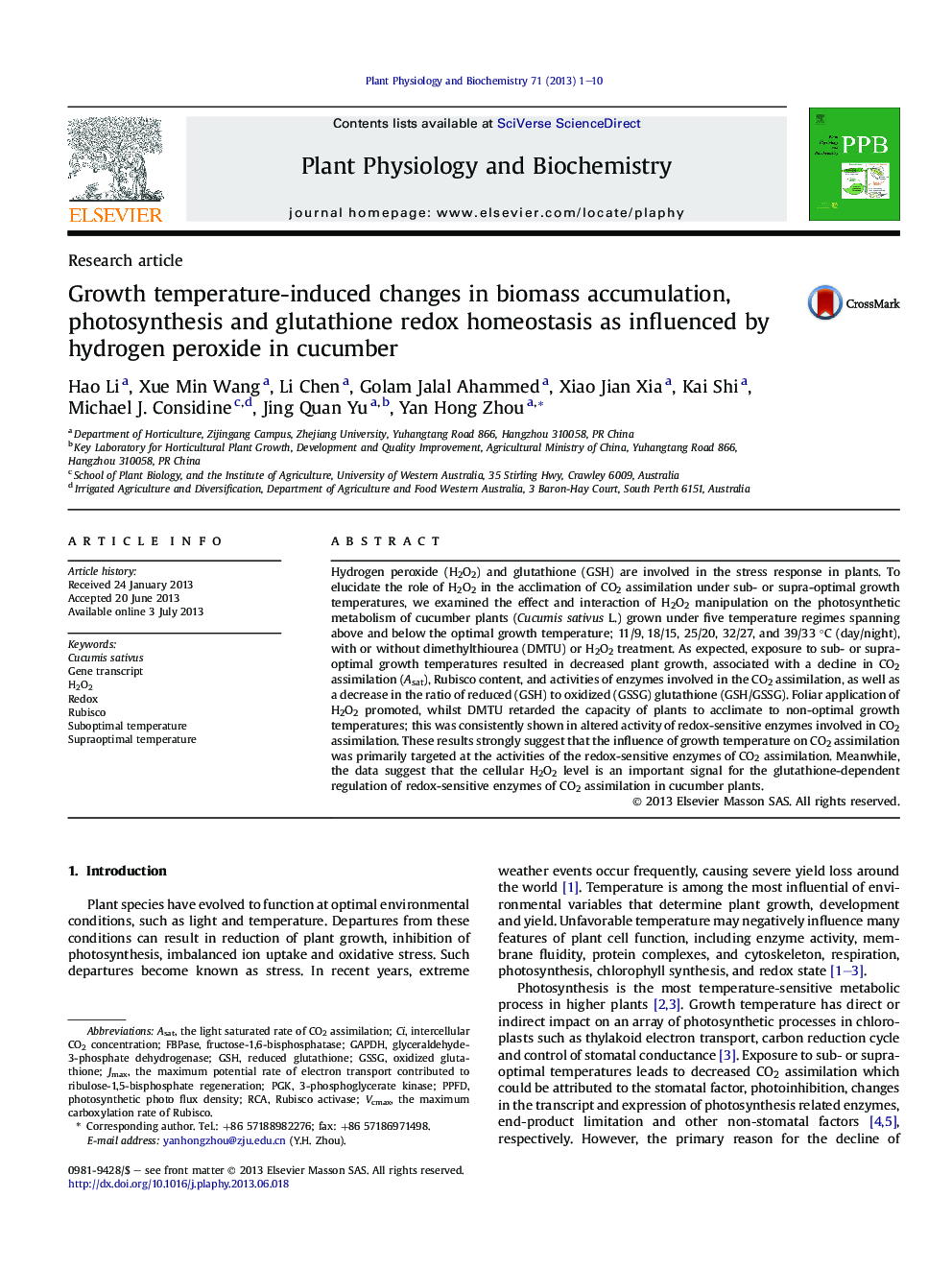| Article ID | Journal | Published Year | Pages | File Type |
|---|---|---|---|---|
| 2016290 | Plant Physiology and Biochemistry | 2013 | 10 Pages |
•Temperature affected CO2 assimilation at the post-transcriptional level.•Temperature altered glutathione redox statue and redox-sensitive enzymes activity.•Manipulation of H2O2 homeostasis modified plant growth and CO2 assimilation.•H2O2 activated redox-sensitive enzymes in a glutathione-dependent manner.
Hydrogen peroxide (H2O2) and glutathione (GSH) are involved in the stress response in plants. To elucidate the role of H2O2 in the acclimation of CO2 assimilation under sub- or supra-optimal growth temperatures, we examined the effect and interaction of H2O2 manipulation on the photosynthetic metabolism of cucumber plants (Cucumis sativus L.) grown under five temperature regimes spanning above and below the optimal growth temperature; 11/9, 18/15, 25/20, 32/27, and 39/33 °C (day/night), with or without dimethylthiourea (DMTU) or H2O2 treatment. As expected, exposure to sub- or supra-optimal growth temperatures resulted in decreased plant growth, associated with a decline in CO2 assimilation (Asat), Rubisco content, and activities of enzymes involved in the CO2 assimilation, as well as a decrease in the ratio of reduced (GSH) to oxidized (GSSG) glutathione (GSH/GSSG). Foliar application of H2O2 promoted, whilst DMTU retarded the capacity of plants to acclimate to non-optimal growth temperatures; this was consistently shown in altered activity of redox-sensitive enzymes involved in CO2 assimilation. These results strongly suggest that the influence of growth temperature on CO2 assimilation was primarily targeted at the activities of the redox-sensitive enzymes of CO2 assimilation. Meanwhile, the data suggest that the cellular H2O2 level is an important signal for the glutathione-dependent regulation of redox-sensitive enzymes of CO2 assimilation in cucumber plants.
